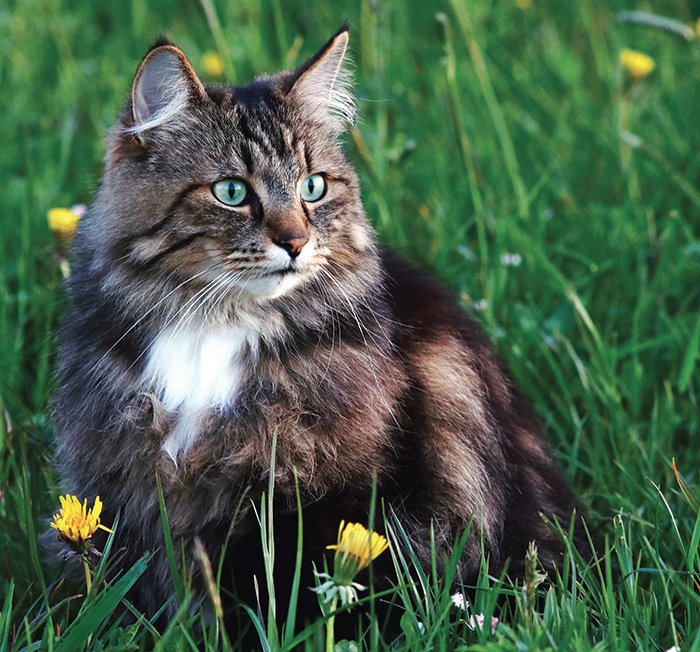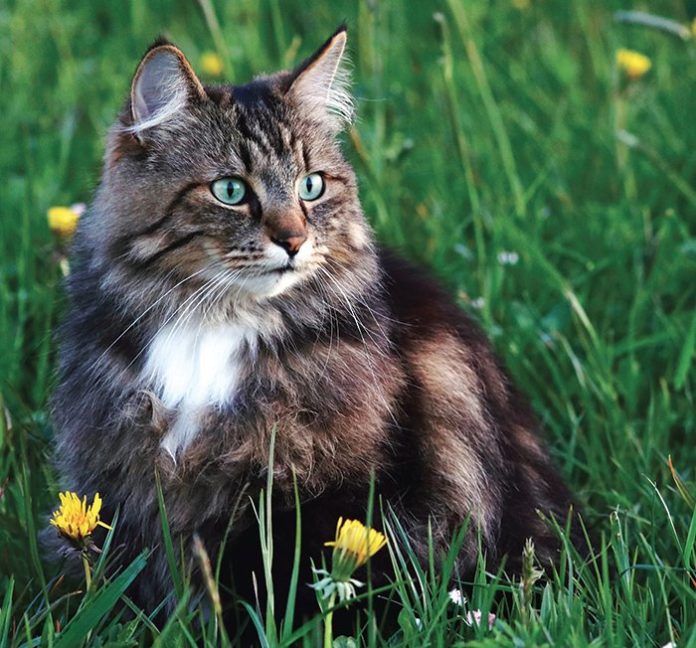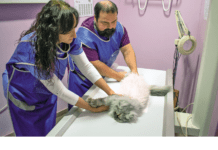Who would have guessed feline nutrition could be tricky? Many major nutrients must be consumed by your cat for him to stay healthy. While your cat food likely includes the proper levels of these nutrients, it’s important for you, as the cat owner, to understand what they are and why they are important.
astrid208 | Deposit Photos


Amino Acids
While most amino acids can be produced by animals from basic nutrients, there are “essential amino acids” that an animal must get from food. For cats, there are 11 essential amino acids: arginine, methionine, histidine, phenylalanine, isoleucine, threonine, leucine, tryptophan, lysine, valine, and taurine.
Taurine and arginine are especially unique since they are only found in animal protein, which means meat. That means cats are “obligate carnivores”—they must eat meat to remain healthy. They cannot produce adequate amounts of these two amino acids on their own and cannot obtain them from a vegetarian/vegan diet.
Taurine
Taurine is important for cardiac function. A deficiency of taurine can lead to fatal heart failure, generally presented as dilated cardiomyopathy. This heart condition is characterized by thinning of the walls of the ventricles, dilation of the ventricles, and a decreased ability of the heart to pump blood through the body.
Blindness, deafness, and reproductive problems may result from taurine deficiency, but the symptoms take time to develop. Most cats can eat a taurine-deficient diet for a several months before any signs of illness develop.
Arginine
Arginine is important in the production of ornithine, an amino acid that is important in the detoxification of ammonia, which is a waste product of protein digestion. If ammonia is allowed to build up in a cat’s system (toxicity), there is a fairly rapid onset of vomiting, ataxia (incoordination), seizures, and other neurologic signs.
Since, as obligate carnivores, cats consume high amounts of protein in their daily diets, diets low in arginine may predispose to ammonia toxicity.
Arachidonic Acid
Arachidonic acid is an essential fatty acid involved in the inflammatory response. Many animals can convert linoleic acid to arachidonic acid via the liver enzyme delta-6-desaturase, but cats lack this enzyme, so they need a dietary source. Arachidonic acid also helps with maintaining skin health, clotting, and reproduction. This essential fatty acid is found in animal fat, another reason that your cat needs animal sources for much of her diet.
Vitamins
Cats also need special attention when it comes to vitamins. Most animals can make an adequate amount of vitamin A from compounds in vegetables such as carrots or leafy greens. Cats tend not to enjoy vegetables to begin with, and the enzyme required to manufacture vitamin A from these substances is not very effective in cats, so they need a dietary source of vitamin A. Vitamin A can be found in liver, fish oil, egg yolks, beef, and some dairy products.
Most animals can make vitamin D when exposed to sunlight, but cats cannot. In addition, they have trouble metabolizing the plant form of vitamin D (D2) so they need vitamin D3 in their diet, which they must obtain from animal sources. These are fat-soluble vitamins, which means they can build up to toxic levels in the fat in your cat’s body, so you don’t want to overfeed vitamin D to cats.
Cats need niacin in their diets. Niacin is also referred to as vitamin B3, or nicotinic acid. Many animals can convert extra tryptophan (an amino acid) to niacin, but cats have large amounts of the enzyme picolinic acid carboxylase that interferes with the conversion. Niacin is found in organ meat (like liver), beef, fish, poultry, and eggs.
Clearly, cats have unique dietary requirements, which may be why homemade cat diets aren’t always a good idea. While “mouse in a can” would be perfect, most owners rely on proprietarily prepared balanced, complete foods produced in a manner that is informed by objective scientific research (see below).


Did You Know? AAFCO vs. NRC
The two most important resources to ensure your cat’s food is complete and balanced are AAFCO (Association of American Feed Control Officials) and the NRC (National Research Council). It’s important to understand that these two organizations do not have the same nutrient requirements, and controversy continues among nutritionists as to which is preferable. Nevertheless, for now, most pet-food companies present an AAFCO statement on their bags, and AAFCO recommendations are widely accepted within the pet-food industry as minimum requirements for nutrients in cat food.
Check your cat food (or manufacturer website) for the AAFCO statement for that particular food. Be sure that it is appropriate for your cat’s life stage (growth, reproduction, adult maintenance, all life stages). This says the food is considered nutritionally complete and balanced, per AAFCO standards. If you don’t see this statement, you may want to reconsider.




